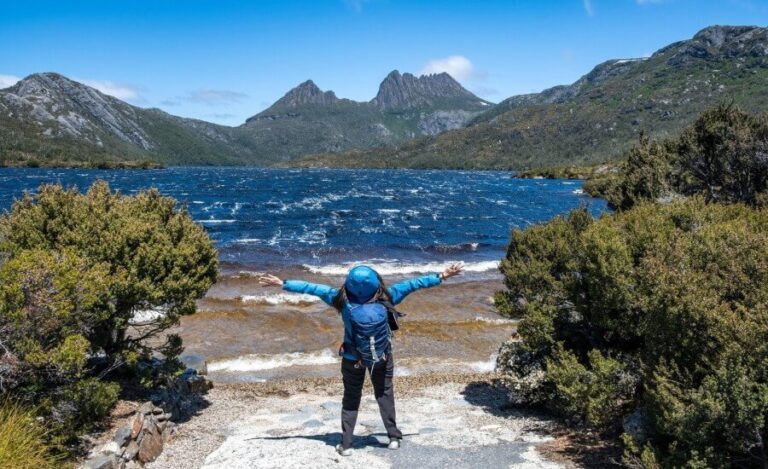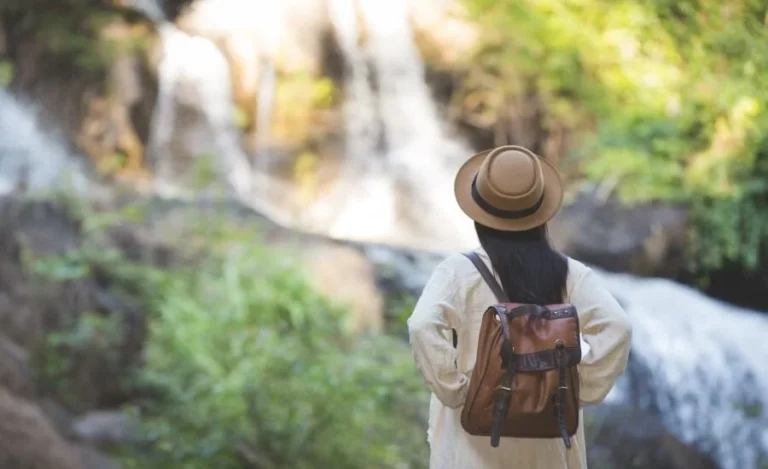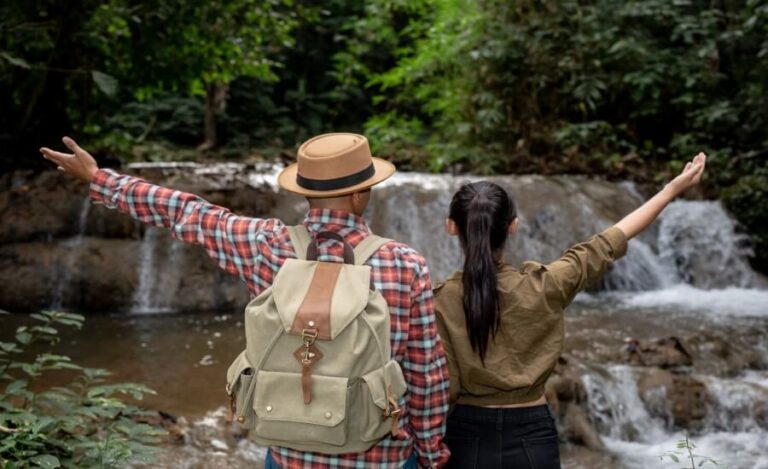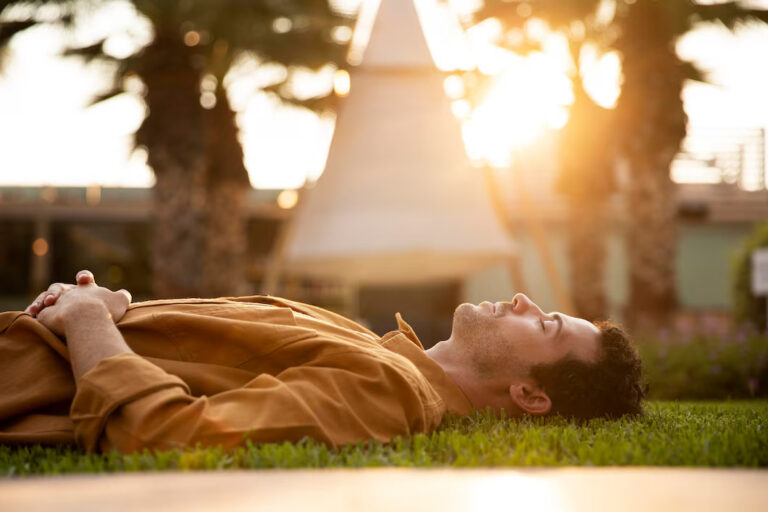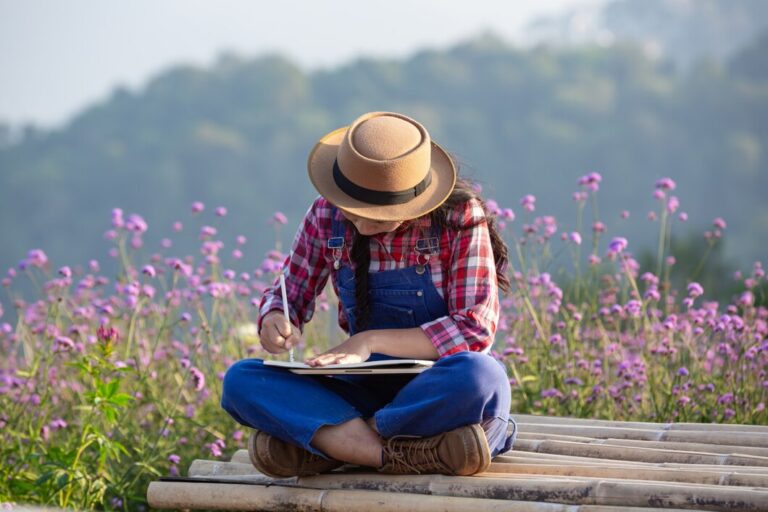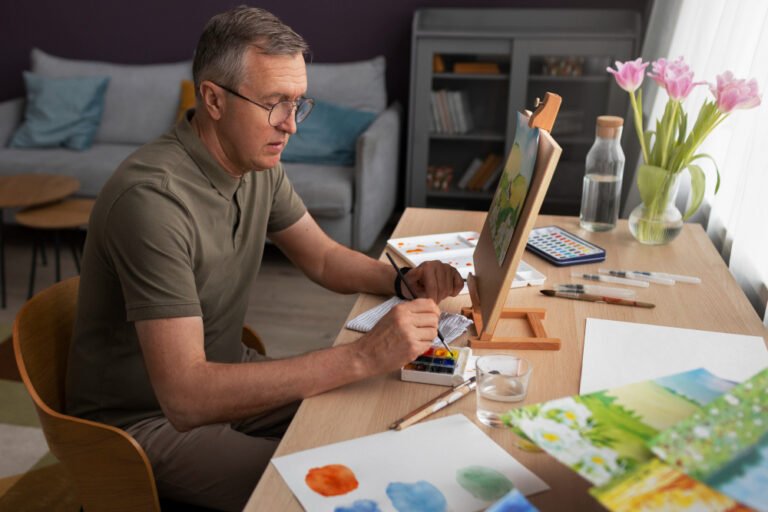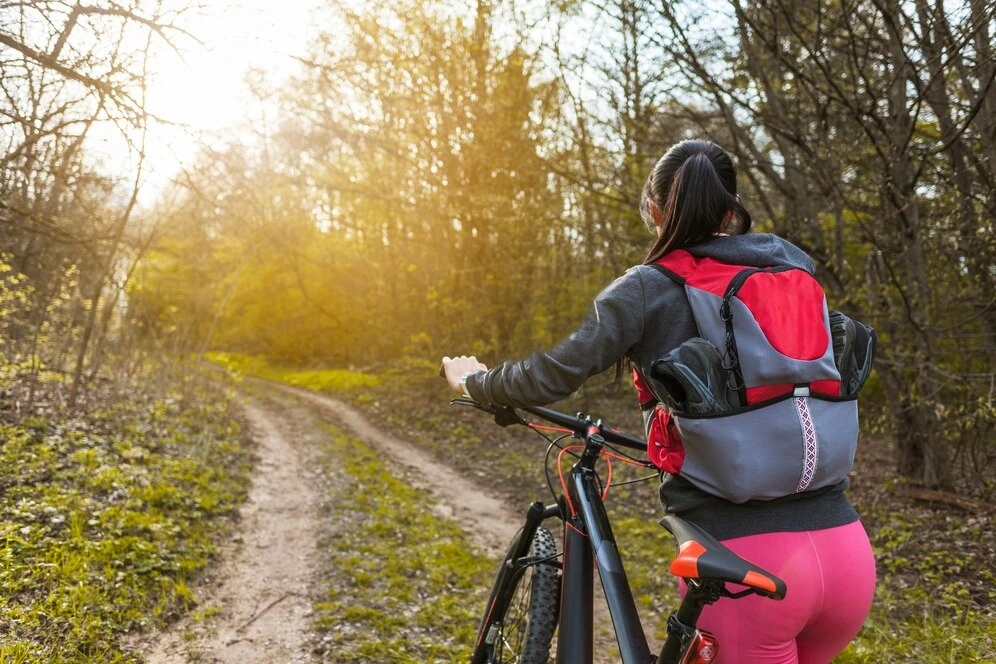
Picture this: the gentle crunch of tires on a gravel path, the whisper of wind through pines, the rhythmic turning of pedals beneath you. There’s no rigid itinerary, no tour bus schedule, no endless stream of notifications demanding your attention. It’s just you, your bike loaded with only the essentials, and the open road stretching towards the horizon. This isn’t a frantic dash between tourist traps; it’s the deliberate, immersive journey of bikepacking – minimalist cycling adventures that can take you across the street, or, indeed, across continents.
In a world saturated with complex travel logistics and the constant pressure to stay connected, bikepacking emerges as a refreshing antidote. It strips travel back to its core elements: movement, self-reliance, and direct engagement with the world.
This post delves into The Joy of Bikepacking, exploring how this minimalist approach to cycle touring fosters unparalleled freedom and a profound connection with both nature and oneself. We’ll uncover the benefits of embracing a tech-minimal mindset on the trail, offer practical tips for gearing down and navigating analog-style, and hopefully inspire you to experience the unique liberation found when you trade digital dependency for pedal-powered presence.
What is Bikepacking? Embracing Simplicity on the Move & Refresh the Soul

At its heart, bikepacking is about exploring the world on two wheels, carrying only what you need, often venturing off paved roads onto trails, gravel paths, and remote tracks. Think of it as backpacking, but with the efficiency and range of a bicycle. Unlike traditional cycle touring, which often involves panniers mounted on racks and primarily sticks to roads, bikepacking typically utilizes frame bags, saddle bags, and handlebar rolls that fit snugly to the bike’s frame. This setup creates a more streamlined, agile profile, better suited for tackling rougher terrain, singletrack trails, and navigating challenging landscapes where tarmac fears to tread.
The philosophy underpinning bikepacking is one of minimalism and self-sufficiency. It’s about carefully considering every item you carry, prioritizing function and low weight. This isn’t just about practicality; it’s about freedom. Less stuff means less weight to haul up hills, a nimbler bike on technical sections, and less mental clutter. It encourages resourcefulness – making do, repairing your own gear, finding solutions on the fly.
Whether you’re planning an overnight trip in your local woods, a week-long exploration of a national park, or dreaming of epic journeys like the Great Divide Mountain Bike Route or traversing sections of the Silk Road, the core principles remain: move lightly, live simply, and engage directly with your surroundings. What could you discover if your journey was defined by the path, not just the destination?
Key Characteristics of Bikepacking:
- Minimalist Gear: Lightweight essentials carried in frame bags, saddle packs, etc.
- Off-Road Capability: Often utilizes bikes suited for trails, gravel, and mixed terrain.
- Self-Sufficiency: Emphasis on carrying your own shelter, food, water (or means to purify), and repair tools.
- Flexibility: Easily adapts to various terrains and trip lengths, from overnighters to expeditions.
- Immersive Experience: Fosters a close connection to the landscape and environment.
The Unplugged Pedal Stroke: Finding Presence in Motion

One of the most profound joys of bikepacking lies in the opportunity it presents to genuinely disconnect. In our hyper-connected world, the constant barrage of emails, social media updates, and news alerts fragments our attention and keeps us tethered to a digital reality, even when surrounded by natural beauty.
Bikepacking, especially when undertaken with a tech-minimal approach, offers a powerful escape. Turning off the GPS, silencing the notifications, and relying on your senses and a paper map fundamentally changes the experience. Your focus shifts from a screen to the world unfolding around you.
Imagine the heightened awareness: you feel the subtle changes in gradient beneath your wheels, notice the direction of the wind by the way grass sways, hear the calls of unseen birds, smell the rain before it falls. The rhythmic motion of pedaling can become a form of moving meditation, calming the mental chatter and fostering a deep sense of presence. Without digital distractions, your mind is free to wander, to observe, to simply be.
This heightened connection to your environment isn’t just pleasant; it’s grounding. You become attuned to the natural world’s pace, finding a rhythm aligned with sunrise, sunset, and your own physical capabilities. Problems that seemed overwhelming back home gain perspective when viewed from a quiet trail. Could the simple act of pedaling away from Wi-Fi be the ultimate mental reset?
Benefits of Disconnecting While Bikepacking:
- Enhanced Sensory Input: Truly seeing, hearing, smelling, and feeling your surroundings.
- Deepened Presence: Full immersion in the journey and the present moment.
- Mental Clarity: Reduced digital noise allows for clearer thinking and reflection.
- Stronger Nature Connection: Becoming attuned to natural rhythms and environments.
- Increased Resourcefulness: Relying on observation and analog skills over apps.
- Authentic Encounters: More likely to engage with locals or fellow travelers without a screen barrier.
- Improved Navigation Skills: Learning to read maps and landscapes directly.
The Joy of Bikepacking: Minimalism, Freedom, and Resilience

The Joy of Bikepacking stems from a unique confluence of factors: the liberation of minimalism, the thrill of self-propelled freedom, and the quiet confidence built through resilience. Carrying everything you need for survival and comfort on your bicycle fosters an incredible sense of capability.
Each item in your kit is chosen deliberately, serving a purpose. This intentional minimalism extends beyond just gear; it influences your mindset, encouraging you to appreciate simple pleasures – a warm meal after a long day, a dry place to sleep, the beauty of an unexpected vista. It’s a powerful antidote to the consumer culture that tells us we constantly need more.
This minimalist approach unlocks unparalleled freedom. You are untethered from rigid schedules, hotel reservations, and the need for constant external validation. Your route can change based on a whim, a recommendation from a local, or the simple desire to explore a side trail. You decide where to stop, when to push on, how fast or slow to travel. This autonomy, powered solely by your own effort, is deeply empowering. Furthermore, bikepacking inevitably builds resilience.
You will face challenges: unexpected weather, mechanical issues, steep climbs, moments of doubt. Overcoming these hurdles, fixing a flat tire miles from anywhere, finding your way after a wrong turn, pushing through fatigue – these experiences forge self-reliance and a quiet confidence that permeates other areas of life. It teaches you that you are more capable than you think.
Consider the contrast: a typical vacation might involve intricate planning and predictable comfort, while a bikepacking trip embraces uncertainty and finds richness in simplicity. It’s less about consumption, more about experience. Less about luxury, more about resourcefulness.
The reward isn’t just reaching a destination, but the texture of the journey itself – the quiet campsites under starry skies, the shared smiles with fellow cyclists, the profound satisfaction of moving through vast landscapes under your own power.
Gearing Down: The Art of the Minimalist Bikepacking Kit

Packing for a bikepacking trip is an exercise in disciplined minimalism. The goal is to carry only what is essential for safety, comfort, and self-sufficiency, while keeping weight and bulk to an absolute minimum. Every gram counts when you’re hauling it up a mountain pass! This doesn’t necessarily mean spending a fortune on ultralight gear (though that’s an option), but rather making smart choices and prioritizing multi-functional items. Forget the “just in case” mentality; focus on the “what do I truly need?” question.
Your setup generally revolves around a few key areas, packed into specialized bags that attach directly to your bike frame, handlebars, and seatpost. This distributes weight evenly and keeps the bike agile. Think layers for clothing, versatile tools, and efficient shelter and sleep systems.
The specific items will vary greatly depending on the trip duration, climate, terrain, and personal preferences, but the minimalist philosophy remains constant. Can one item serve multiple purposes? Is there a lighter alternative? Do I really need this?
Minimalist Gear Guide – Key Categories:
- Bike & Bags: A suitable bike (often hardtail MTB, gravel bike, or adventure bike) fitted with frame bags, a saddle pack, and a handlebar roll/harness. Ensure bags are securely attached and balanced.
- Shelter: Lightweight options include a bivy sack, a tarp with trekking poles/bike, or a small, lightweight tent. Consider bug protection needs.
- Sleep System: Lightweight sleeping bag or quilt appropriate for expected temperatures, paired with an inflatable or foam sleeping pad for insulation and comfort.
- Clothing: Layering is key. Base layer (merino wool or synthetic), mid-layer (fleece or light puffy), waterproof/windproof outer shell (jacket and pants). Cycling shorts/bibs, riding jersey/shirt, camp clothes (lightweight pants/top), socks, gloves, hat. Prioritize quick-drying materials.
- Cooking: Minimalist stove (canister or alcohol), small pot, spork, lighter/matches. Simple, calorie-dense food (oatmeal, pasta, dehydrated meals, nuts, energy bars). Consider “no-cook” options for simplicity.
- Water: Bottles or hydration reservoir. Crucially, a reliable water filter or purification tablets/drops are essential for refilling from natural sources.
- Tools & Repair: Multi-tool with chain breaker, tire levers, patch kit, spare tube(s), small pump or CO2 inflator, chain lube, zip ties, duct tape. Know how to use them!
- Navigation: See next section. Paper maps, compass. Potentially a basic GPS device as a backup or for tracking, but prioritize analog skills.
- Safety/First Aid: Basic first-aid kit tailored to potential cycling injuries, headlamp/bike lights with spare batteries, sunscreen, insect repellent, emergency communication device (whistle, mirror, potentially satellite messenger for very remote trips).
- Hygiene: Toothbrush, travel-size toothpaste, biodegradable soap, small trowel (for Leave No Trace sanitation).
Navigating the Wild: Analog Skills for Authentic Adventure

In an age where GPS directs our every turn, navigating by map and compass while bikepacking feels almost like a revolutionary act. Yet, it’s a skill that profoundly deepens the adventure, fostering independence and a much richer understanding of the landscape. Relying solely on a digital screen can create a disconnect; you follow the arrow, often oblivious to the broader context of your surroundings. Analog navigation forces you to look up and engage.
Using a paper map requires you to constantly orient yourself, identifying landmarks – rivers, peaks, ridgelines, road junctions – and relating them to the symbols on the page. A compass helps you confirm direction of travel and take bearings. This process builds spatial awareness and teaches you to read the terrain in a way that following a GPS track rarely does. You start to understand why the trail climbs steeply here or follows a valley there. It makes you an active participant in your journey, not just a passenger following digital instructions.
Of course, getting slightly lost is part of the learning curve and often leads to unexpected discoveries or helpful encounters. Don’t underestimate the value of asking locals for directions or information about current conditions – it’s often more reliable and up-to-date than any app, and fosters human connection.
While a basic GPS device or smartphone app (with downloaded offline maps) can serve as a valuable backup or for checking precise location occasionally, try making analog methods your primary navigation tool. The satisfaction of successfully navigating a complex route using map, compass, and observation is immense. It transforms navigation from a passive task into an engaging skill that enhances the entire bikepacking experience.
Common Concerns & Solutions for Bikepackers

Venturing out on a loaded bike, especially off-road or in remote areas, naturally comes with questions and concerns. Planning and preparation are key to mitigating risks and building confidence.
- Concern: What if my bike breaks down far from help?
- Solution: Learn basic roadside repairs before you go! Practice fixing a flat tire, repairing a broken chain, and adjusting brakes/gears. Carry essential tools (multi-tool w/ chain breaker, tubes, patches, pump, chain lube, zip ties, duct tape) and know how to use them. Choose reliable gear and perform a thorough bike check pre-trip.
- Concern: Is it safe, especially solo or in remote areas?
- Solution: Research your route thoroughly – understand terrain, potential hazards, and local conditions. Choose routes appropriate for your skill level. Inform someone of your itinerary and expected check-in times. Carry a basic first-aid kit and know how to use it. Be aware of your surroundings. Consider carrying a personal locator beacon (PLB) or satellite messenger for true emergencies in very remote zones with no cell service. Trust your intuition.
- Concern: How do I handle navigation without constant GPS?
- Solution: Practice map reading and compass skills beforehand. Carry detailed, waterproof paper maps of your route. Use a compass to orient the map and take bearings. Supplement with observation of landmarks. Use a GPS device as backup if desired, ensuring maps are downloaded for offline use. Allow extra time for navigation.
- Concern: Am I fit enough? What about steep climbs?
- Solution: Start with shorter trips and gradually increase distance and difficulty. Incorporate hill training into your preparation. Choose gearing appropriate for loaded climbing (lower gears are your friend!). Pace yourself – bikepacking is often more about endurance than speed. Don’t be afraid to walk steep sections (hike-a-bike is part of the adventure!).
- Concern: How do I find enough water and food, especially on remote routes?
- Solution: Plan your route around reliable water sources (streams, lakes, towns). Always carry more water capacity than you think you need. Critically, carry a reliable water filter or purification method and know how to use it. Research resupply points (towns, stores) along your route and plan food accordingly. Carry calorie-dense, non-perishable foods.
Before You Go: Your Minimalist Bikepacking Checklist

Thoughtful preparation sets the stage for a successful and enjoyable minimalist bikepacking adventure.
- Bike Check & Fit: Ensure your bike is in excellent working order (brakes, gears, tires). Check that bags fit securely and don’t interfere with riding. Make sure the bike fit is comfortable for long days.
- Gear Shakedown: Pack everything you intend to bring, load it onto your bike, and go for a short test ride. Identify what’s unnecessary, what’s missing, and how the bike handles when loaded. Refine your kit.
- Practice Basic Repairs: Be confident fixing a flat, repairing a chain, and making minor adjustments. Carry the necessary tools and spares.
- Physical Preparation: Build endurance with regular cycling, including hills and carrying some weight if possible. Don’t neglect core strength.
- Route Research & Planning: Study maps, understand the terrain, elevation profile, potential hazards, weather patterns, water sources, and resupply options. Have a primary route and potential alternatives.
- Navigation Plan: Acquire appropriate paper maps (and waterproof them). Practice using them with a compass. Decide on your tech strategy (analog primary? GPS backup?). Download offline maps if using digital backup.
- Tech Minimization: Decide what tech stays and what goes. Turn off unnecessary notifications. Inform contacts about limited connectivity. Charge essential devices (phone for emergencies, lights) but plan to keep them off/stowed most of the time.
- Emergency Plan: Inform someone reliable of your detailed route and expected return time/check-in points. Carry a first-aid kit and know basic first aid. Consider an emergency communication device (PLB/satellite messenger) for very remote trips.
- Leave No Trace: Review LNT principles, especially regarding waste disposal, campsite selection, and sanitation in the backcountry. Pack a trowel.
Conclusion: Pedal Towards Freedom and Presence

The Joy of Bikepacking isn’t just about cycling; it’s a philosophy embraced on two wheels. It’s about discovering the profound satisfaction that comes from moving through landscapes under your own power, carrying only what you truly need.
It’s about the freedom found in simplicity, the resilience built through challenge, and the deep sense of presence that arises when you disconnect from the digital noise and tune into the rhythm of the ride and the pulse of the natural world. From weekend explorations in local forests to ambitious journeys across continents, bikepacking offers a uniquely intimate and rewarding way to experience our planet.
Trading screen time for trail time, GPS dependency for map-reading skills, and excessive gear for minimalist efficiency doesn’t diminish the travel experience – it enhances it. It fosters resourcefulness, sharpens awareness, and opens the door to more authentic interactions and a deeper connection with yourself and your surroundings.
Ready to experience it? You don’t need to cross a continent on your first try. Start small. Plan an overnight trip close to home. Borrow or rent gear if needed. Pack light, leave the non-essential tech behind, unfold a map, and pedal out your front door. Discover the simple, potent joy of minimalist adventure on two wheels. The road awaits.
